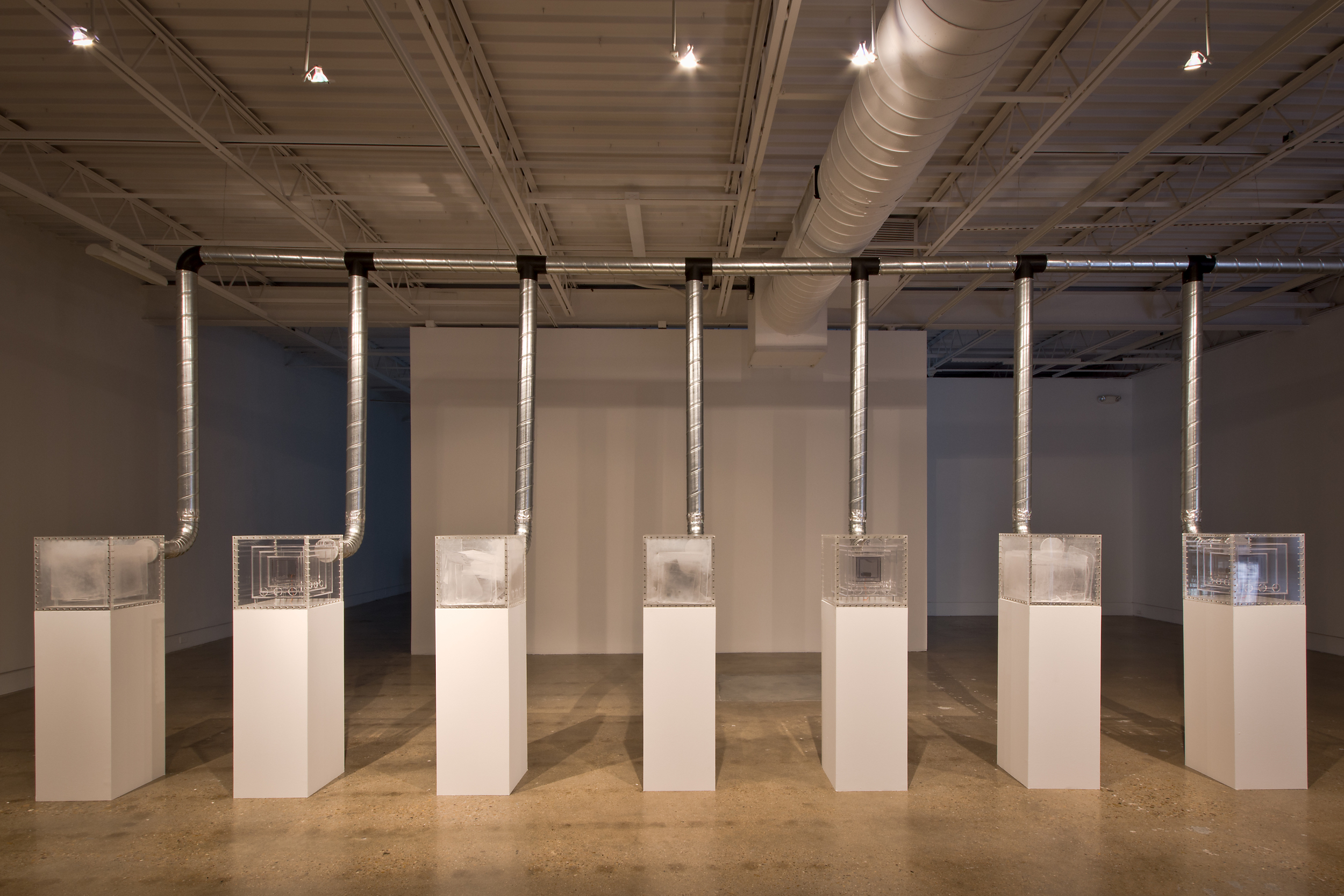
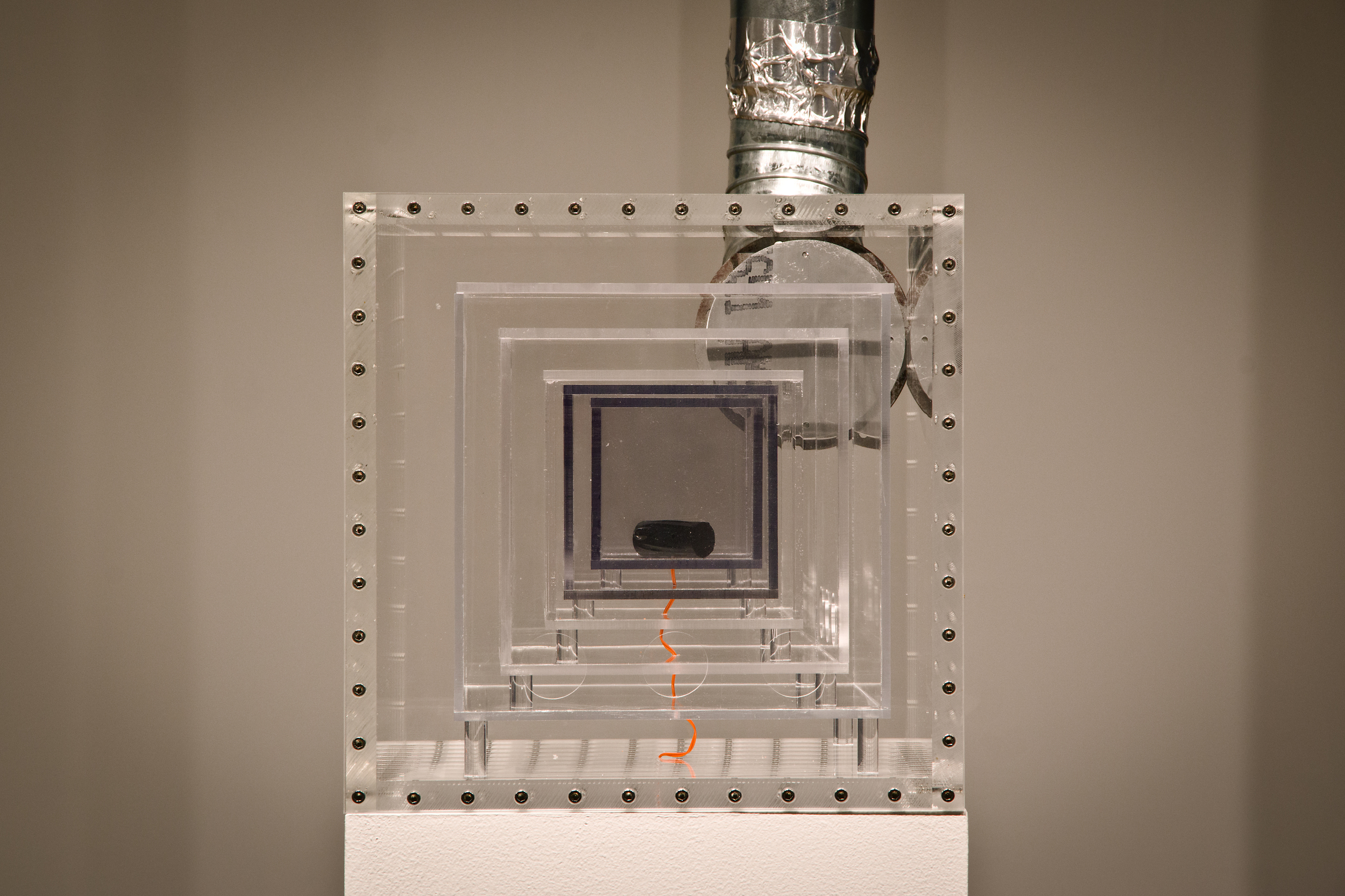
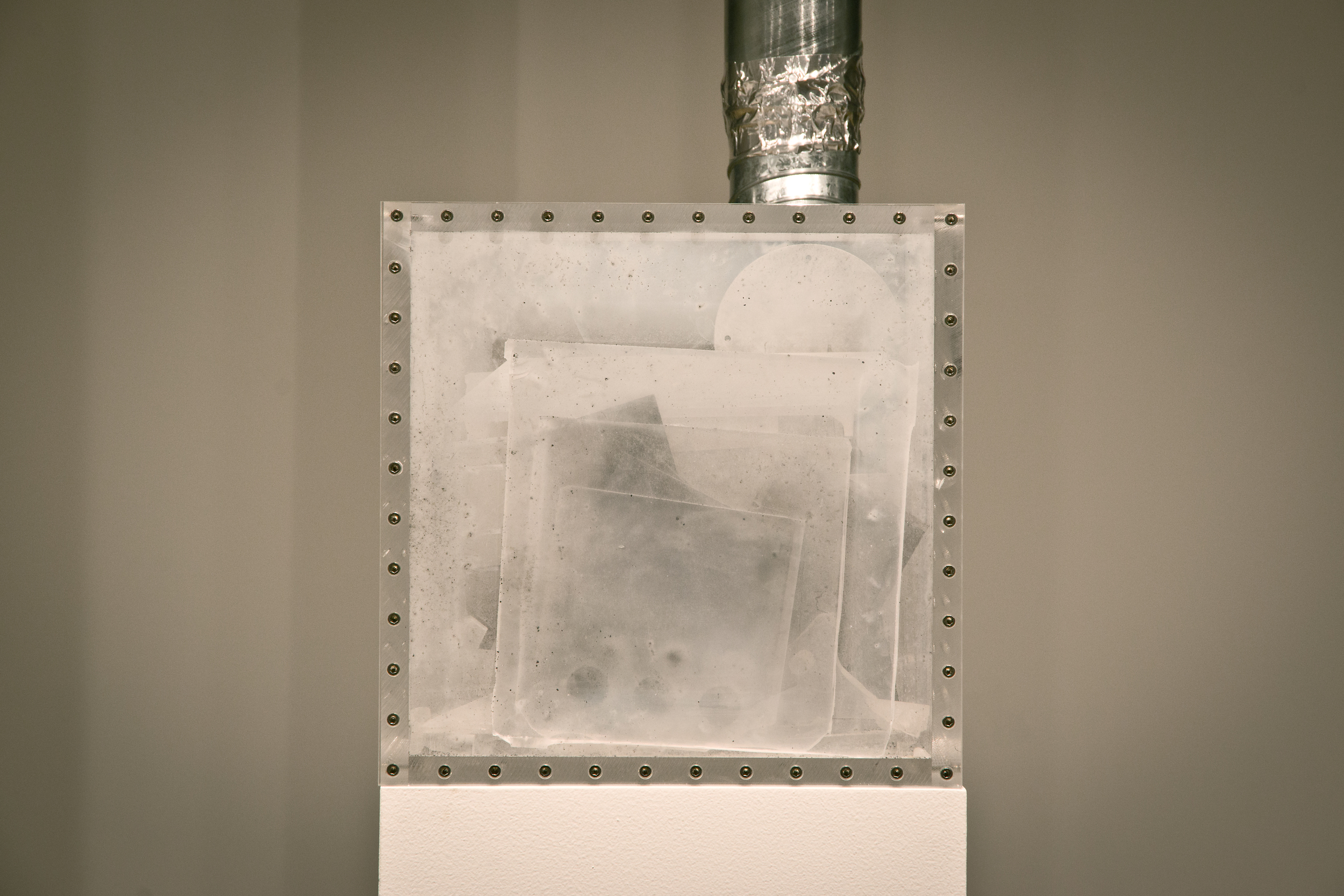
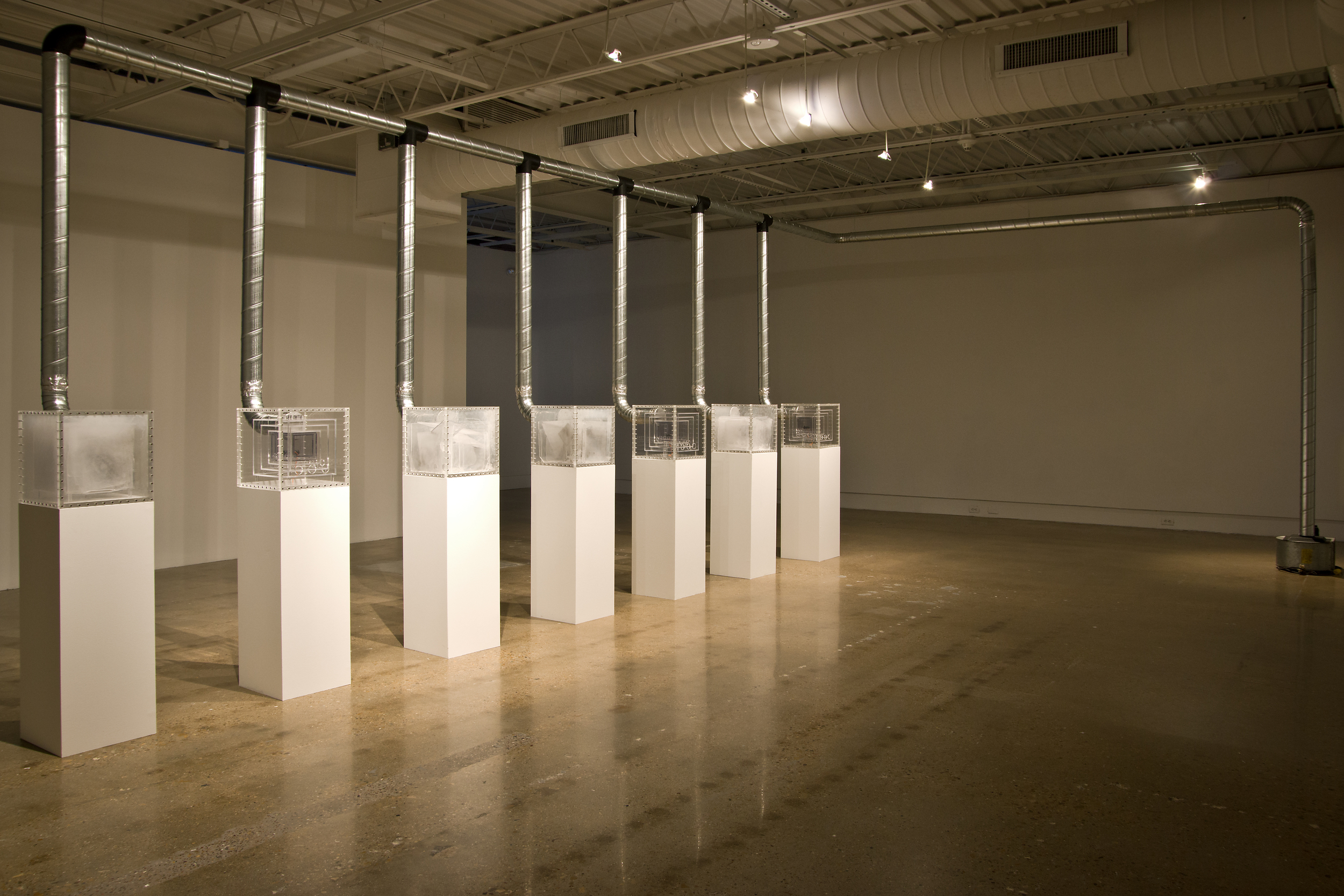
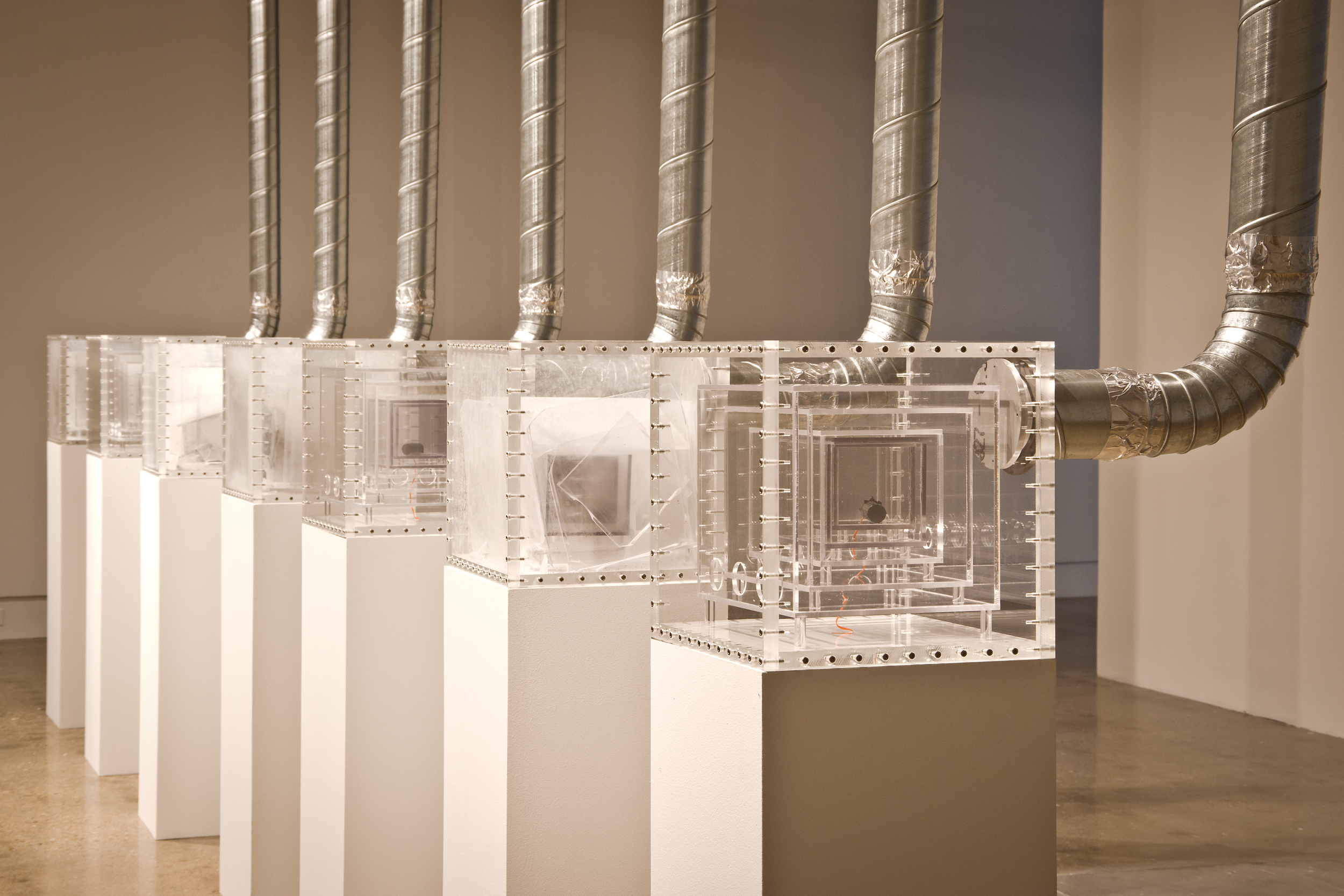
Explosion
Seven identical plexiglass boxes are arranged throughout the gallery. Inside each is a nested set of six progressively smaller plexiglass enclosures. At the center of each set is a single gram of black powder, formed into a small explosive charge. These charges are detonated at unpredictable intervals throughout the exhibition's duration.
We consume images of violence constantly, explosions, war, destruction, filtered through screens and newsfeeds. In the average American home, the physical sensation of an explosion is distant and abstract. This piece reintroduces that raw physicality. The viewer is not watching a recording; they are standing near the event itself. The detonation is small, contained, and safe, but it is real. It reverberates through the body, echoing against the architecture of the space and the nervous system alike.
Beyond its visceral impact, the work questions our assumptions about art, permanence, and control. We manipulate materials to hold our ideas, freezing them in time and calling them art. Museums institutionalize this impulse: they protect, preserve, and attempt to render objects timeless. But this effort runs contrary to the laws of nature. Nothing is truly static. Every object decays. Every system degrades. A static universe is a dead universe.
This piece embraces that contradiction. It asserts that creativity is not the act of arresting time, but of working within its flow. By embedding a cycle of destruction into the work itself, it rejects the fantasy of permanence. What is presented here is not a singular, finished object, but an ongoing process of change, rupture, and transformation. Without destruction, there can be no creation. Without entropy, there is no life.
Reviews
Questioning the Art Object by Jenifer Smart in Arts and Culture TX